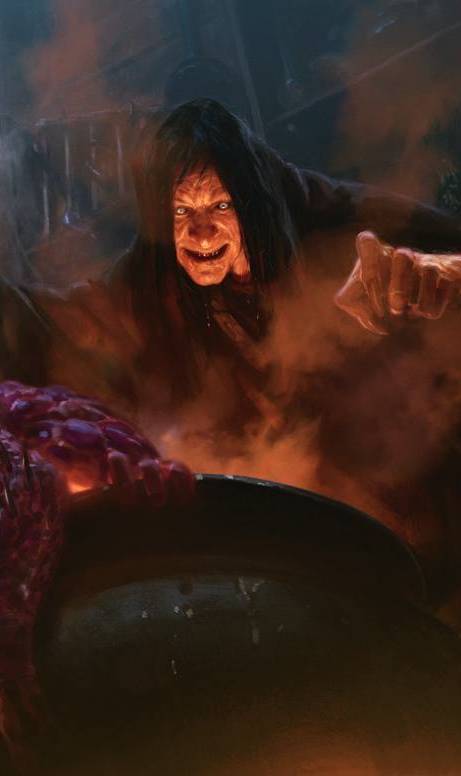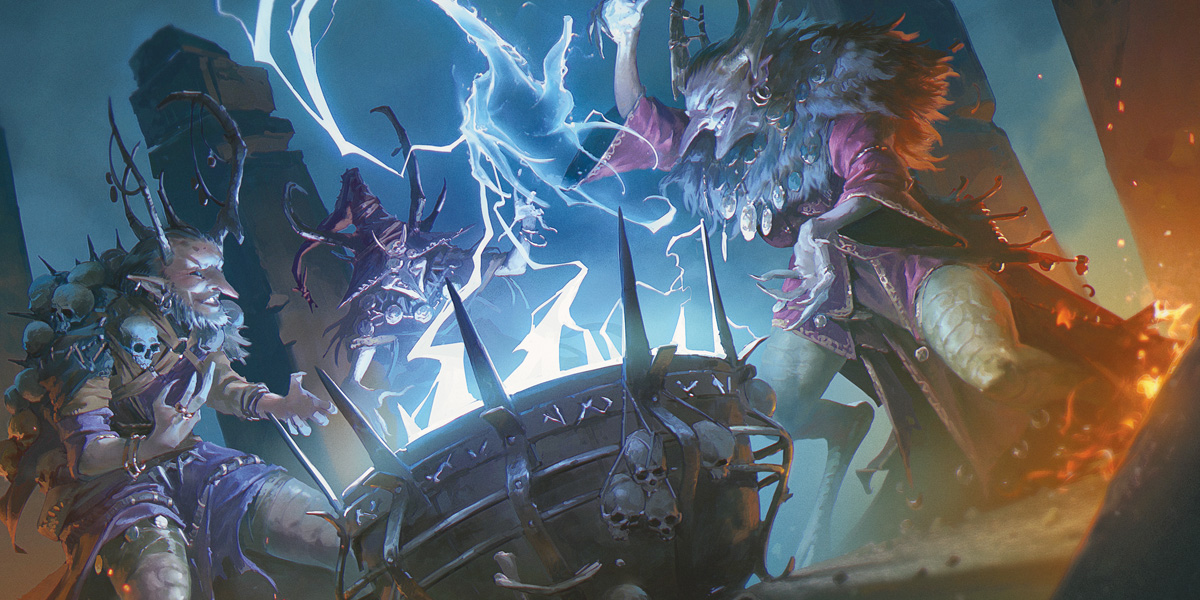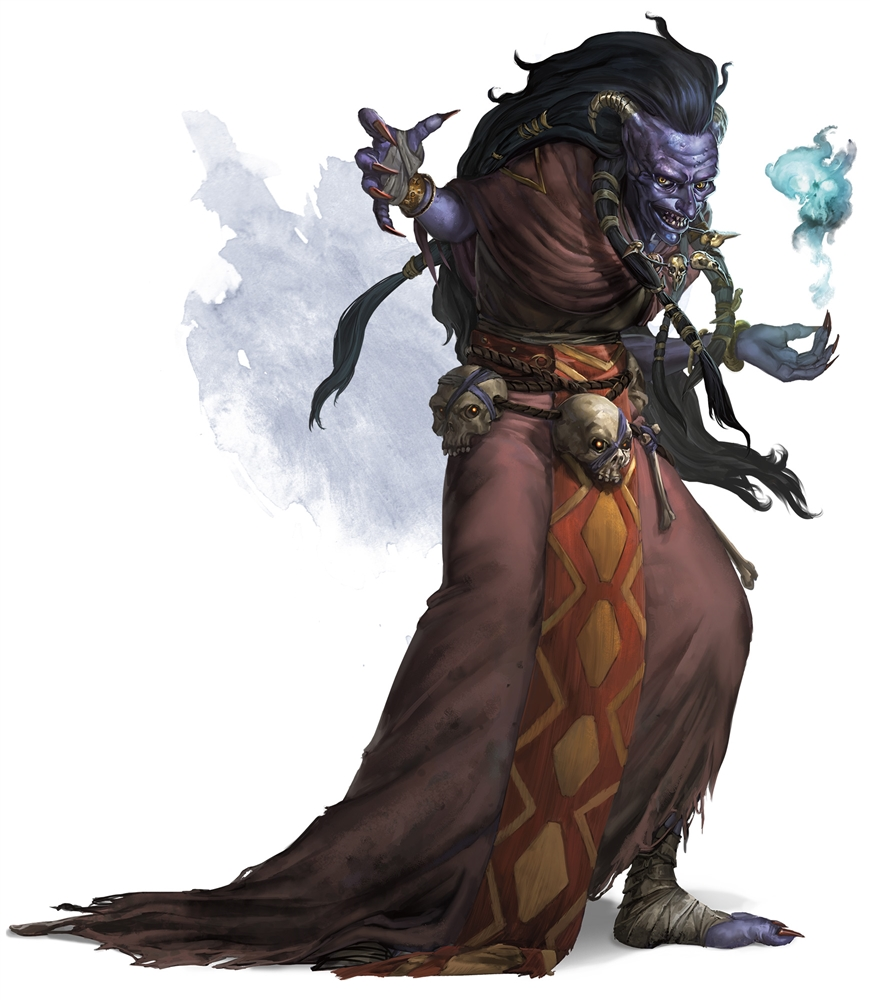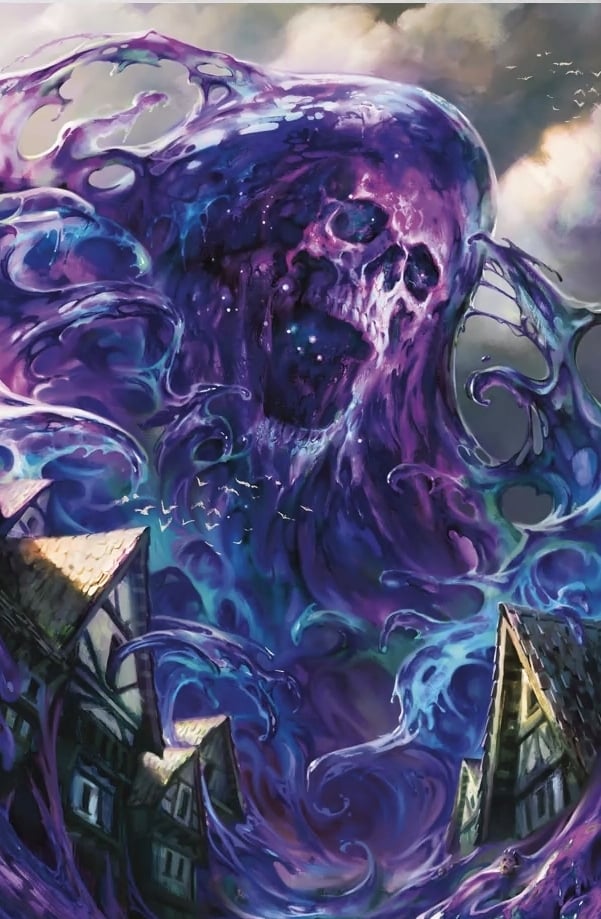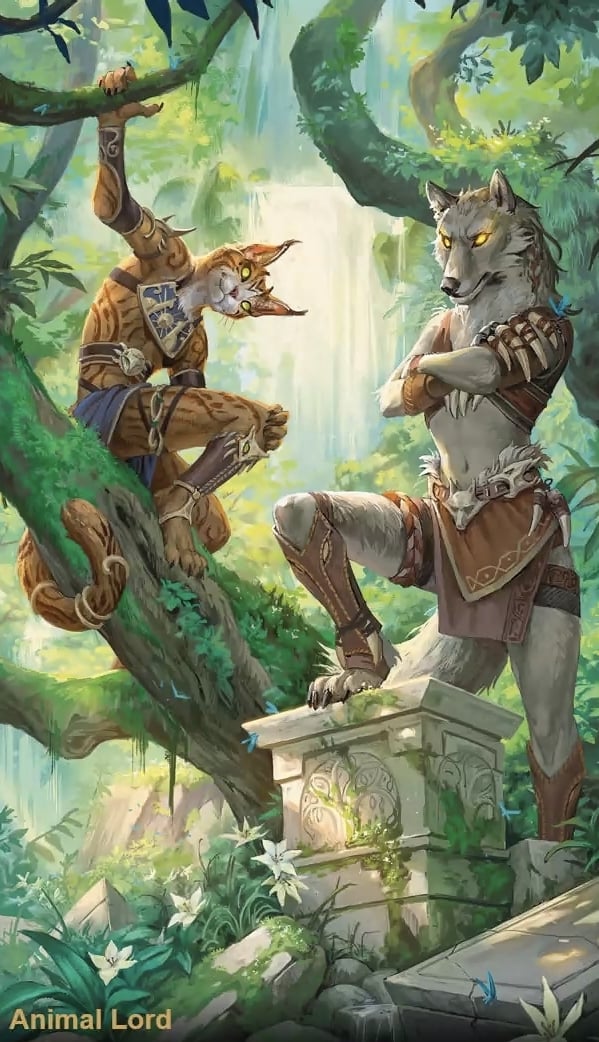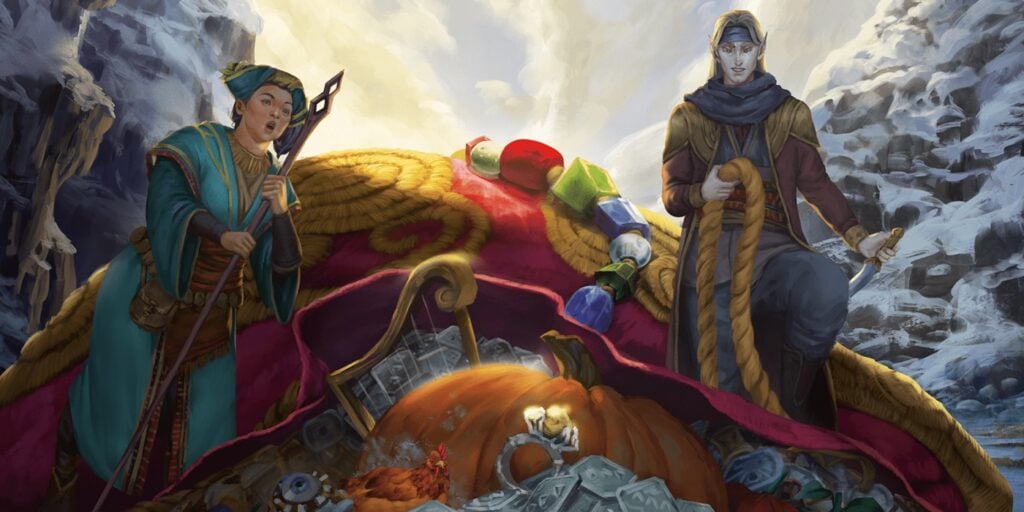D&D: Arch-Hags, Animal Lords, and Annihilation – New High Level Monsters are Epic Threats
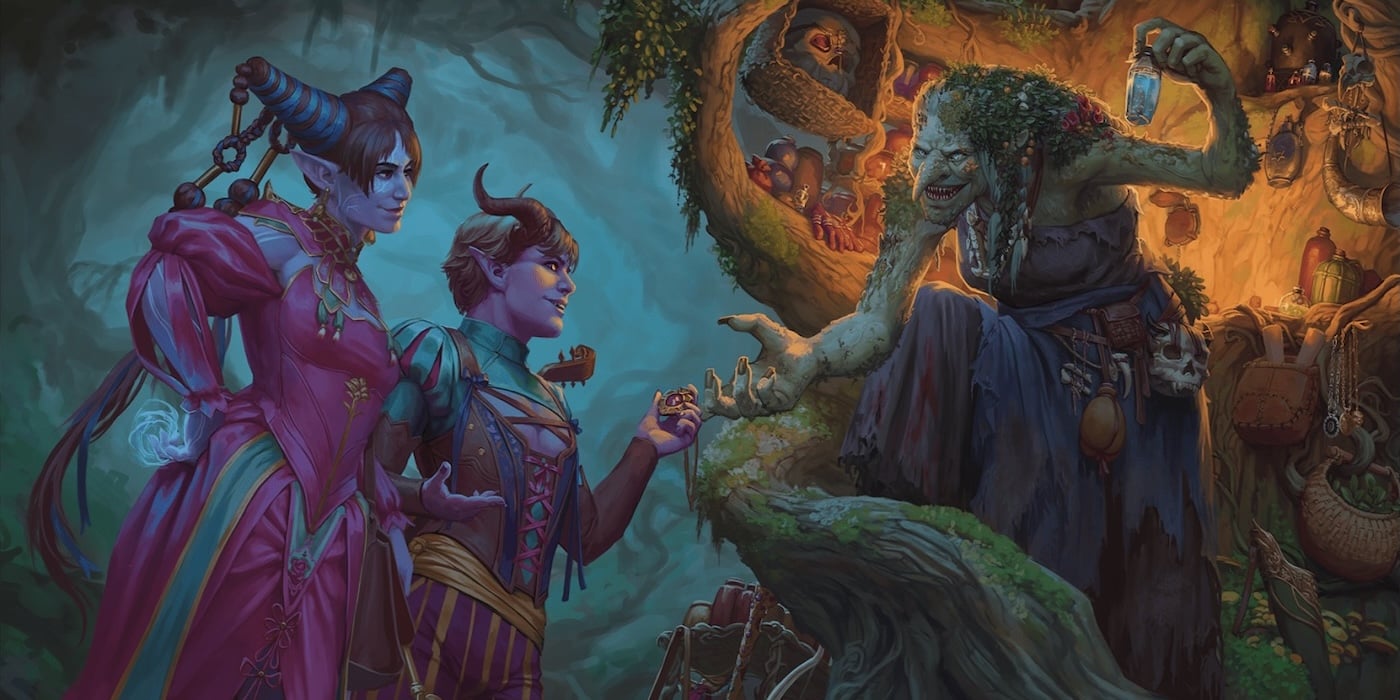
WotC showed off three high level monsters on D&D Beyond, recently, the Arch-Hag, Animal Lord, and Blob of Annihilation.
One of the big promises of D&D 5.5E is “more high level threats.” And it’s a nice sentiment, to be sure, but it’s not the lack of high level monsters that’s the big reason you don’t see much high level play.
It’s more a function of the amount of work that goes into running higher level adventures. Adventurers have more abilities that can alter the game at basically a whim. What does it matter if you capture an adventurer who can just cast plane shift? And that’s just a basic example.
But, more and higher level monsters certainly won’t hurt high level play either. WotC has showcased three on D&D Beyond: the Arch-Hag, Blob of Annihilation, and Animal Lord. So let’s take a look.
That Hag is Arch – High-Level Monster Preview
What is an arch-hag? Well, as you might have guessed from the name, it’s like a normal hag but arch. Not “arched”—you probably won’t find an arch hag straddling a road, or helping to hold up a bridge. But Arch in the sense of more intense and high powered. Described as “witches of the wilds” these are hags turned up to eleven.
Arch-hags are everything a regular hag is, just worse. Immortal, capricious, ill-tempered, self-interested, nd dangerously cunning, they trade in secrets and pursue their plots with magical bargains.
The most infamous arch-hag is the immensely powerful Baba Yaga, the Mother of All Witches, whose chicken-legged hut has been spotted all across the multiverse. Parties who catch the attention of one of these unpredictable opponents often feel like the arch-hag is several steps ahead, using their magic to gather information, stir up confusion, and inspire betrayal.
So, you know. Witch stuff. At CR 21, they are likely to be a dire threat to anyone CR 12 and under. Any higher and you’ll have to work hard to beat one in a fight, but it’s doable. Still, as you might have guessed from the “cunning” descriptors, arch-hags prefer to avoid battle unless they have to. So you’ll want to give your arch-hag plenty of minions and servants. But, that doesn’t mean the arch-hag is a slouch in a fight.
With a +16 initiative bonus, the hag stands a good chance of going first. Going first means the arch-hag has a chance to set the stage for the encounter, thanks to powerful spellcasting abilities. Arch-hags are high level monsters, but they are also spellcasters. And while we haven’t gotten a look at their full stat block, the D&D Beyond article reveals they are capable of casting Dimension Door at will, either on their turn, or as a Legendary Action.
Dimension Door is the ultimate getaway spell, because you don’t need to see where you’re going, or even be aware of your destination. All you have to do is specify a direction and a distance and you’re off. It’s Verbal only, too, so that means it’s quite hard to stop someone from casting it. And a paranoid arch-hag probably has at least one getaway route in its lair.
Anathema and Anti-Spellcaster
We also learned that arch-hags can only be killed if they’re reduced to 0 hit points within 30 feet of their anathema. This is whatever the arch-hag hates most in the world. It could be a concept, like the worst pun in the multiverse, or a specific thing, like the eye of the first person they ever cursed.
This brings to mind the hag from Baldur’s Gate 3, who, with few spoilers, makes a return after a first encounter. If the arch-hag isn’t killed near their anathema, they instead teleport to a demiplane with 1 hit point remaining and can’t return for 2d6 days. Also, anyone nearby is cursed bby the arch-hag just for playing.
Arch-hags have a number of powerful abilities that they can curse people with: Crackling Wave, Tongue Twister, and Spiteful Escape. Crackling Wave prevents a creature from taking Reactions until the Hag’s next turn. Tongue Twister prevents spellcasters from casting spells with verbal components, and Spiteful Escape grants Disadvantage on ability checks and saving throws and also makes the hag aware of your location wherever you are in the multiverse until someone can remove the curse.
The Blob of Annihilation – A Big Chaotic Ooze Can Be a High-Level Monster
We finally get a look at what the Blob of Annihilation can do. And while it doesn’t disintegrate things like a Sphere of Annihilation, it does deal a ton of necrotic and forced amage. As a Titan, a Blob of Annihilation has no restrictions on how big it can become. These usually form in the depths of Wildspace, and can range in size from a normal gargantuan thing, to mountain or planet-sized.
But what does it do? For starters, it flings ooze out to a range of 600 feet. Anyone hit by a glob of the blob’s restraining ooze gains the restrained condition and is pulled 60 feet towards the blob. It can also Engulf cretures that happen to be near it—anyone caught in its path makes a Strength save or is engulfed. Being engulfed is bad news—you get restrained AND begin suffocating immediately. And for your troubles, you also take automatic Force damage at the start of the blob’s turn, and it can use a Legendary Action to deal Necrotic damage to engulfed targets.
But hey, don’t get engulfed and this thing is a piece of cake to deal with.
Lord Over the Animals With the Animal Lord High-Level Monster
Last but not least of the three high level monster previews is the Animal Lord. An animal lord is a monster that has been in D&D since the earliest days. Starting with the Cat Lord from 1st Edition. In 5.5E, an animal lord is “an immortal spirit associated with a particular type of animal.” And you’ll be able to determine what kind of animal specifically, but they get sorted into three broad categories: Foragers, Hunters, and Sages.
At CR 20, animal lords are about on par with a demigod (so, a party of 14th or 15th level can pretty reliably wipe the floor with one if they encounter it fresh). But they have a number of potent abilities to help protect them, depending on the type of animal you pick. Foragers are tough and can boost their hit points, Hunters are vicious and can impose Frightened as a condition, and Sages use magic.
They’re also very physically imposing, with both swim and fly speeds at 60 feet (matching their regular speed), and Truesight on top of a high initiative bonus (+19). Animal lords can hit hard and fast, but might not always be an enemy. The D&D Beyond article suggests they might be patrons, rulers of an otherworldly area, or even allies.
Find even more high level monsters in the 5.5E Monster Manual, due out in a few short weeks!

